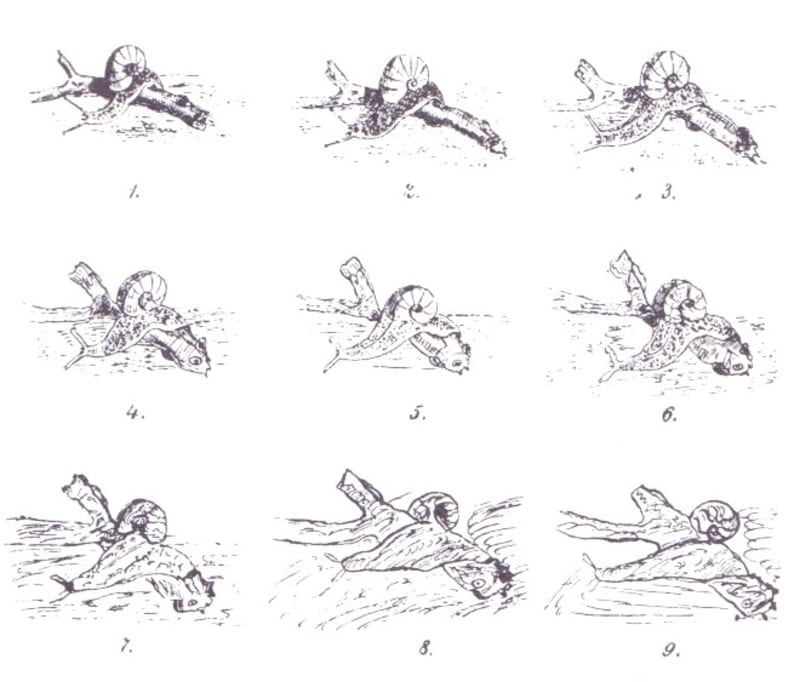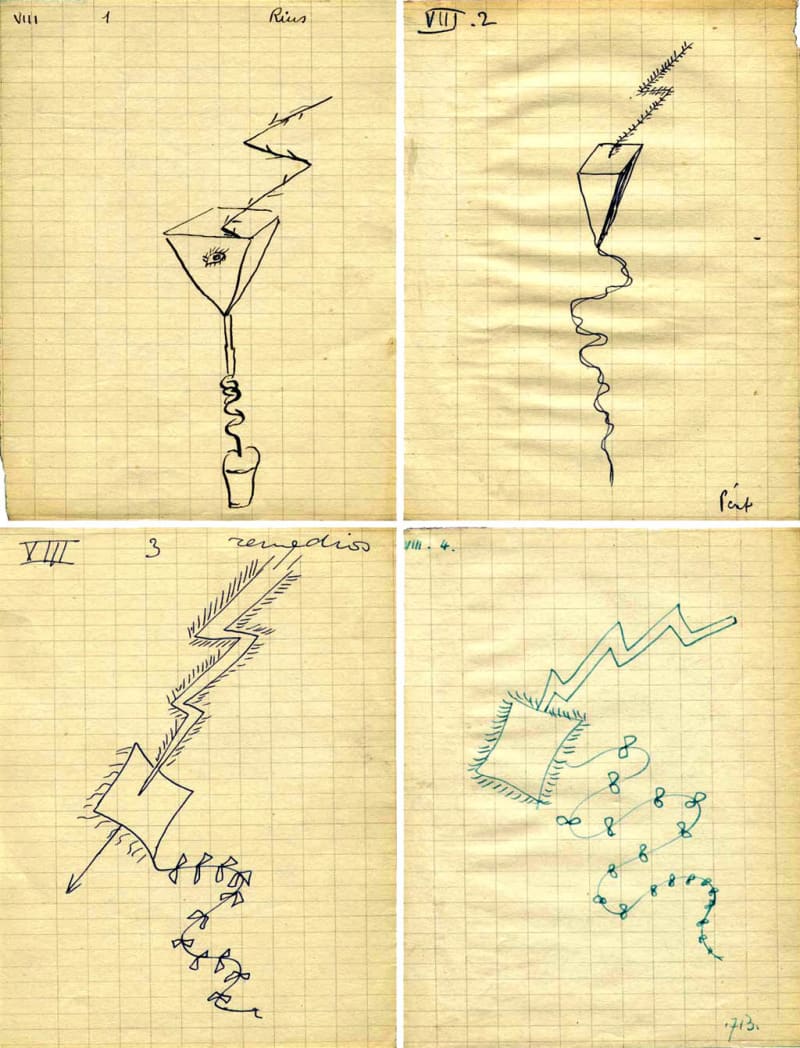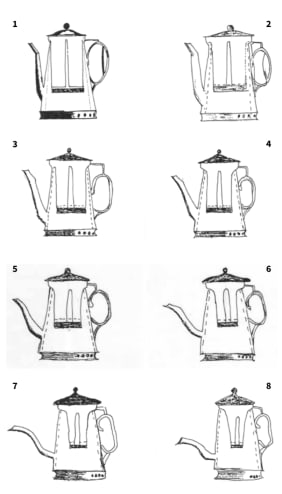Evolution in the repeated copying of designs

One person makes a drawing and passes it to a second person, who makes a copy. A third person copies this copy, without reference to the original; and so on. One might imagine that, in this process, the original design would deteriorate and eventually dwindle away. But no, it takes on a life of its own. The Victorian pioneer of scientific archaeology, General Augustus Lane Fox Pitt-Rivers, made copying experiments of this kind with his friends, imagining that they might throw light on the ‘evolution’ of decorative motifs in pre-industrial artefacts and the craft tradition. The psychologist Frederic Bartlett asked subjects to recall drawings shown to them briefly and make copies from memory, which were then shown to other subjects who copied them, and so on in sequence. Bartlett published the results in his very influential book on Remembering of 1932. In the later 1930s the ‘Pope of Surrealism’ Andre Breton and his Surrealist artist friends – who had possibly read Bartlett - played a game called ‘Dessin Successif’, intended to draw strangeness from the players’ shared unconscious. I got architectural students to play Pitt-Rivers’s copying game in the 1970s.


In the paper ‘Abstraction and Schematization in the Repeated Copying of Designs’ (Social Analysis Vol. 63, Winter 2019 pp.131-148) I identify some common trends that seem to occur, as drawing are copied again and again: a flattening of elements pictured in 3D into 2D outlines, a removal of perspective occlusion, the separation of closely spaced lines, and the widening of narrow angles between lines. In a word, drawings become more diagrammatic. I suggest that these processes might have to do with ways in which designs are represented mentally. Our ‘mental diagrams’ subtly affect what we see, and steer what we pick out to copy